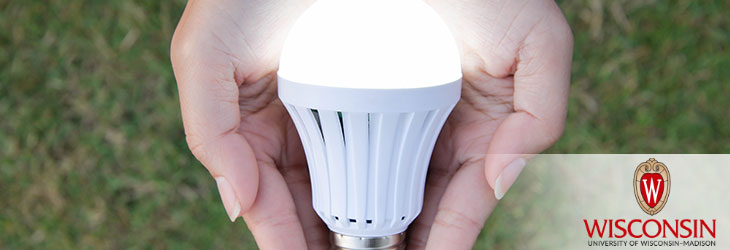Clean Technology

Sustainable Process to Remediate Liquid Waste Streams
WARF: P140335US02
Inventors: Sundaram Gunasekaran, Nael Yasri
The Wisconsin Alumni Research Foundation (WARF) is seeking commercial partners interested in developing a three-part electrochemical system to treat effluents containing heavy metals bound to organic and/or inorganic material.
Overview
An estimated one million tons of heavy metals are discharged into sewers each year in the United States, persisting in soil and water and ultimately contaminating crops and fish. Waste streams containing heavy metals complexed with organic and/or inorganic material are especially tough to treat. This type of pollution emanates from a range of industries such as metal coating, mining, fracking and industrial food processing.
The Invention
UW–Madison researchers have developed an environmentally sound and cost-effective system to remediate effluent streams containing organometallic/inorganometallic contaminants. Metals are recovered in the process and the treated water can be recycled for industrial applications.
The system includes units for electro-oxidation, electro-deposition and electro-adsorption. These units work sequentially to (1) break the strong chemical bonds in the waste stream, (2) recover the heavy metal ions and (3) remediate the organic/inorganic material.
A primary advantage of the new system is the redesigned electro-deposition unit, which houses a concentrating cathode and helps in the recovery of metals present even in very low concentrations in a reusable form.
The system includes units for electro-oxidation, electro-deposition and electro-adsorption. These units work sequentially to (1) break the strong chemical bonds in the waste stream, (2) recover the heavy metal ions and (3) remediate the organic/inorganic material.
A primary advantage of the new system is the redesigned electro-deposition unit, which houses a concentrating cathode and helps in the recovery of metals present even in very low concentrations in a reusable form.
Applications
- Remediating tough-to-treat effluents
- Wastewater streams from a variety of industries (e.g., metal finishing, quenching, leaching, etching, stripping, textiles, drilling, pharmaceutical and paper processing)
Key Benefits
- Effective for metal recovery and water recycling
- Cuts costs and treatment time
- Method is ‘green’ and requires few added chemicals.
- No need for pH adjustment for metal removal
- Easily incorporated into existing end-of-pipe treatment plants
Stage of Development
The researchers have demonstrated that their system may be up to twice as effective at removing metals such as copper, cadmium and lead from liquid waste streams. They effectively recovered copper from various complexes and removed pollutant components from corn wet-milling effluent, reducing the chemical and biological oxygen demands of the mixture by more than 99 percent.
Additional Information
For More Information About the Inventors
Related Technologies
For current licensing status, please contact Mark Staudt at mstaudt@warf.org or 608-960-9845